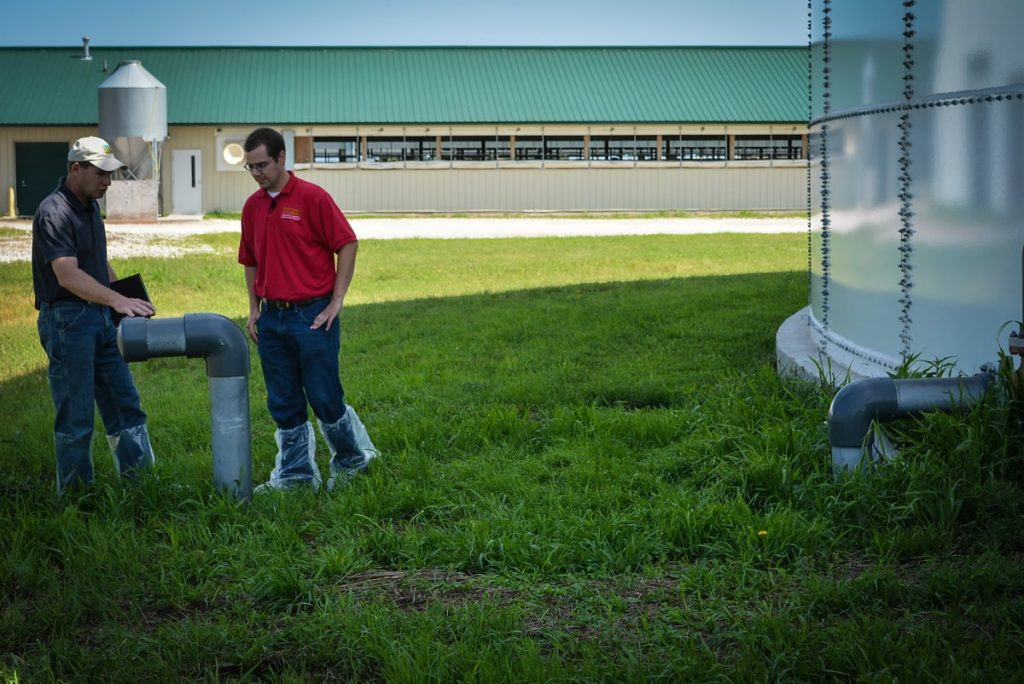
Equipment
Equipment
Storage
Maintaining your manure system
August 1, 2017 by Iowa Manure Management Action Group
 Check over your manure storage to prepare for the fall Iowa Manure Management Action Group
Check over your manure storage to prepare for the fall Iowa Manure Management Action GroupAugust 1, 2017, Ames, IA – Summer is here and it’s brought dry weather throughout much of the state. This type of weather is a great time to check over your manure management systems and make sure it will keep doing its job. A great place to start is with your manure storage. Fall application season is still a ways away, but a little planning now can make sure you have the flexibility to manage your manure like the fertilizer resource it is, and to make sure your storage will keep functioning for years to come.
Proper management and maintenance is necessary to prevent manure from overflowing or discharging from a storage system. Whether the manure storage is in an earthen tank, a slurry store, or a deep pit, the basic principles to maintaining and managing the storage structure are similar. In any case, frequent evaluation and preventative maintenance will significantly reduce your risk and keep your manure where you want it.
- Monitor the operating level of your manure storages. Have a staff gauge or a method for determining how much manure is already in your storage. Keeping track of how much manure is there can give insight into if you have enough capacity to make it to your next land application window. If you are worried you may run short this will give you an early opportunity to evaluate how you are going to handle the situation when your storage gets full. Monitoring the level can also alert you to if anything unexpected is occurring, for instance, your manure storage isn’t filling up or filling up really quickly because of a water leak or outside drainage water getting in.
- Visual structure inspection. A quick look over the storage can tell you a lot about how your structure is holding up – as you walk around, pay close attention to inlet points, connections, and where the sidewalls connect to the base. To make this easier make sure you are mowing around your storage and cutting down trees, watching for animal burrows, and making sure clean water is being diverted around your manure storage structure.
- Odor evaluation. I know odor can be a stink of a topic, but it’s something we have to deal with. Make it a part of your routine to go around your farm once a week and make a note of the odor intensity and what neighbors may be smelling. Unfortunately there usually are not easy fixes, but for those of you interested in learning more about potential odor options check out AMPAT.
- Safety check. We all recognize there are some safety challenges to working in and around manure storage systems. Take the time to review your safety protocols and update as needed. Taking the time to go over them will remind everyone that they are important and to protect us. While you are at it make sure to check any fences, escape ladders, and warning signs you have posted to make sure they are still in good shape, readable, and present.
- Clean water diversions. Minimizing outside water entering a manure storage helps keep nutrient concentrations higher making it an economic fertilizer for a farm to use. Check over the clean water diversions around your farm to make sure things like silage piles, mortality compost piles, and in-ground manure storage piles aren’t receiving water from other areas.
- Application equipment. Manure equipment lives a tough life, it gets used quick for a month and then put away. Take the time to check it over now before you need it again this fall and get that one last part that you’ve been meaning to fix.